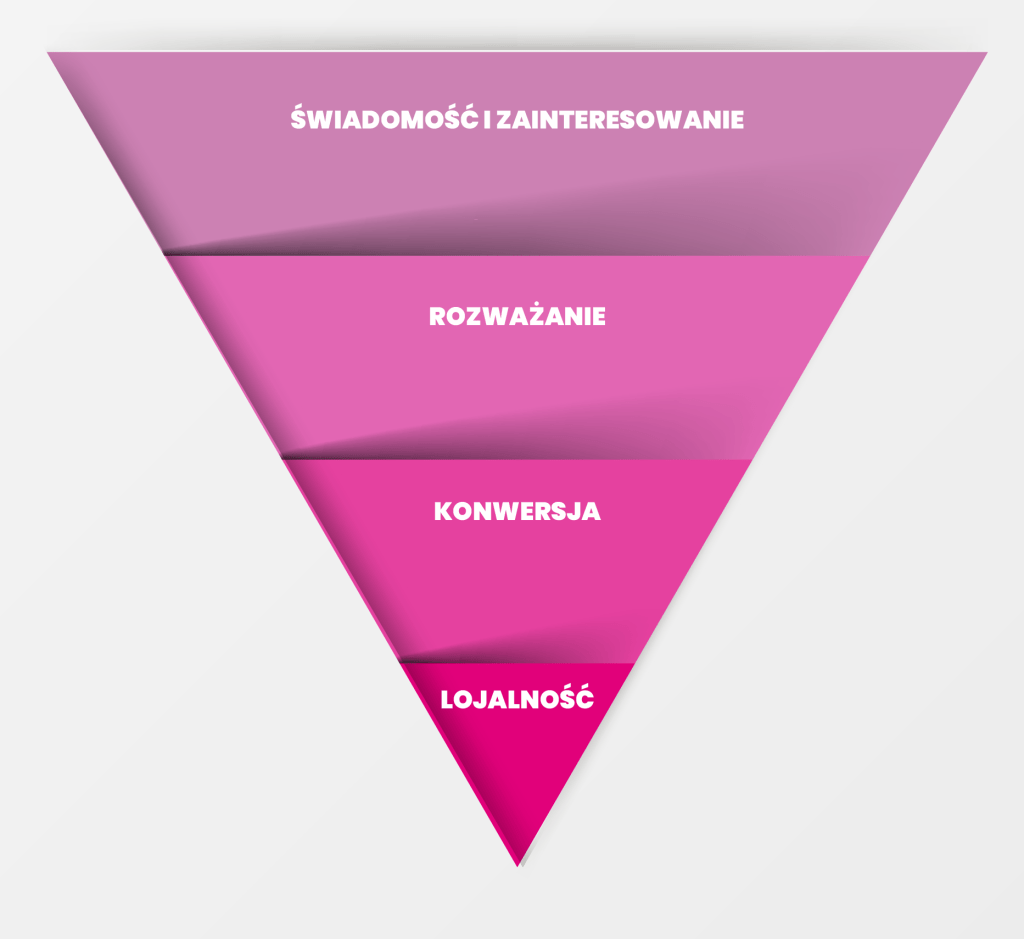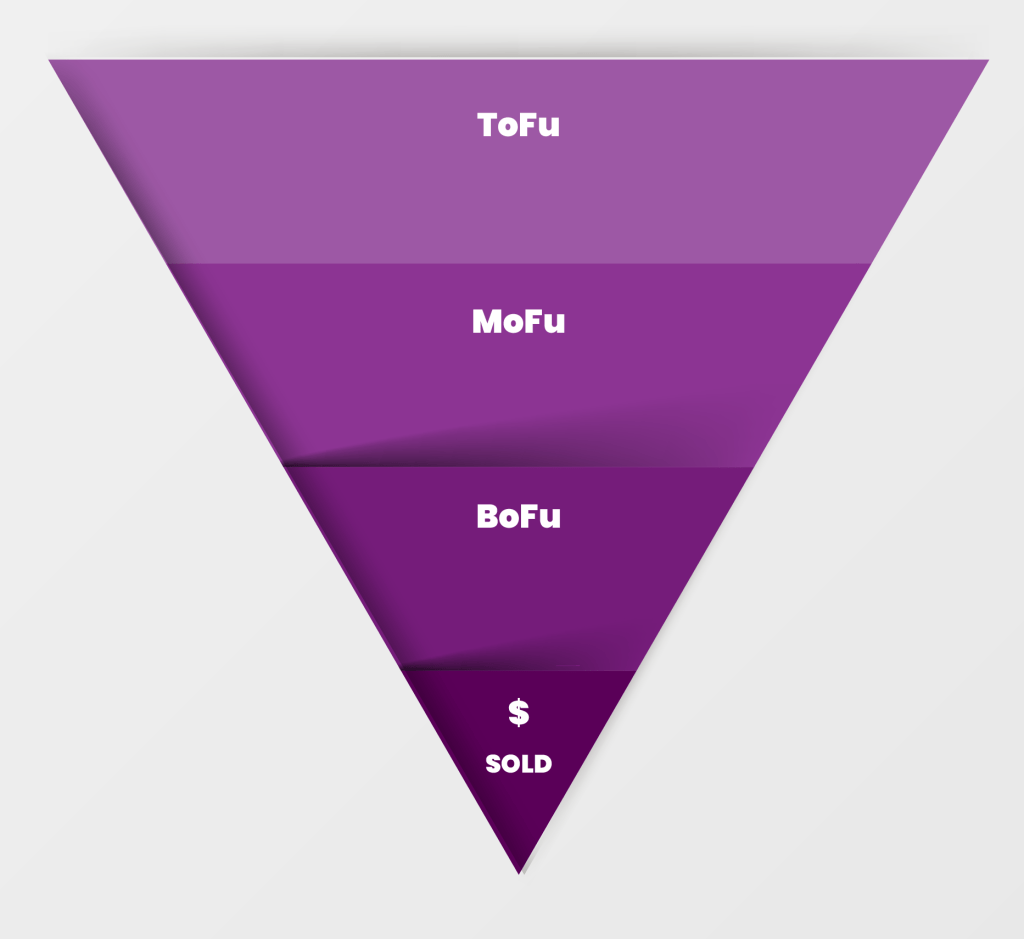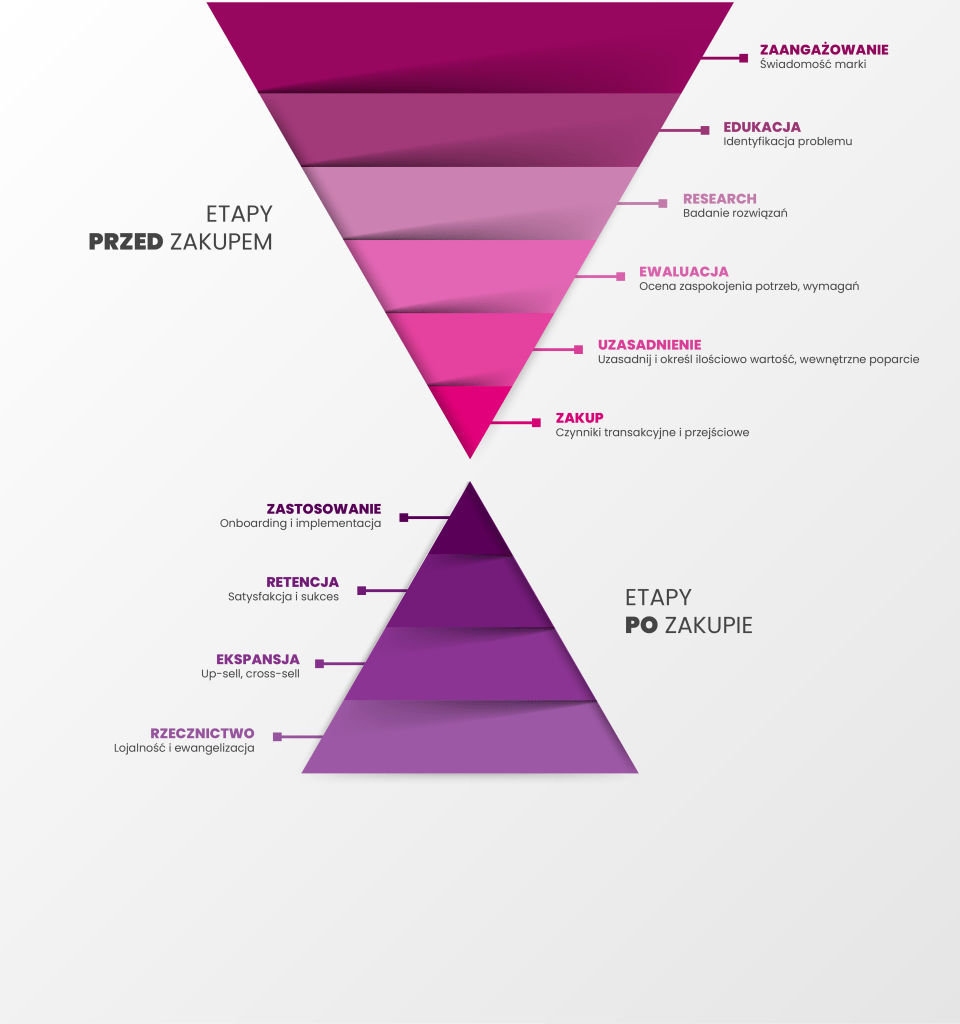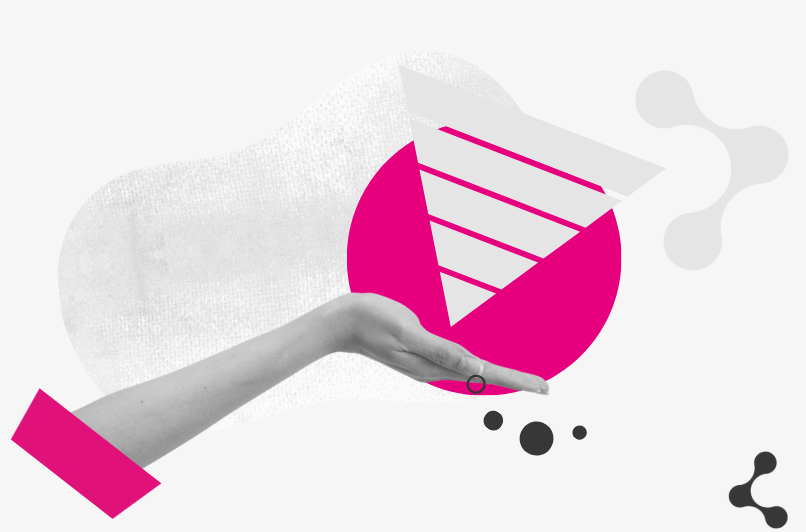The Evolution of the Sales Funnel in a Few Words
The sales funnel is a marketing pathway that consumers must follow to become loyal customers of a brand. It’s typically represented as a graphical depiction of the process of discovering a brand and deciding to use its products or services (and yes, I’m aware of the theory that says services are also products).
The funnel, or more specifically its stages, has evolved. One of the first models was AIDA (Awareness, Interest, Desire, Action), which was later expanded with an “L” for Loyalty. Today, we encounter many highly detailed funnels with stages like engagement, education, awareness, evaluation, justification, purchase, onboarding, retention, expansion, and advocacy.
For this article, let’s consider a simplified version of the funnel (at the end, I will present a structure that, in my opinion, is the best model for brand building).
Simplified graphical representation of the sales funnel:

Why Should You Build Your Own Funnel?
I’m sure you’ve heard or even said things like:
- „Facebook doesn’t sell.”
- „Search campaigns don’t generate leads.”
- „Branding campaigns don’t convert.”
These are common statements in the market, often stemming from a lack of understanding of how to properly use funnels.
Measuring marketing goals or conversions—for each channel based on last-click attribution or whether someone participated in the purchase path—is akin to saying the knowledge we gained in high school is useless because we don’t use it in our professional careers. Just because we don’t use it directly doesn’t mean it didn’t help us acquire other skills necessary for our job. Similarly, the knowledge gained from analyzing the sales funnel can be invaluable.
In uncertain and stressful business times, it’s easy to make the mistake of cutting a channel or activity that doesn’t immediately appear to drive sales (or one we can’t prove is contributing to them).
We assume we’ve saved money, only to find that by the end of the month, the number of orders from new customers has dropped. Even though the average cart value has increased, in the overall picture, we are earning less. This situation could indicate that we cut off activities at one of the upper stages of the funnel, known as ToFu (Top of the Funnel).
While optimizing campaigns for short-term sales performance is tempting, it can hinder business scaling in the long term. In the coming months, brands prioritizing the analysis and mid-to-long-term measurement of the upper and middle stages of the sales funnel will find it easier to thrive. Their success depends on the ability to evaluate communication strategies based on the information gathered.
According to the Nielsen Brand Resonance Report from 2021, a 1% increase in awareness and consideration leads to a 1% increase in future sales [1]. Recent studies show that this same growth also reduces customer acquisition costs by 1%, clearly demonstrating that nurturing ToFu and MoFu (Middle of the Funnel) has an indirect impact on sales.
How to Build a Sales Funnel?
You are just two steps away from building your sales funnel:
-
Define your target audience – Ideally, create a brand persona, assign it personality traits, and look at your brand through its eyes. Data for this can be found in Google Analytics, CRM, e-commerce panels, and marketing automation systems. Anywhere your customer leaves a trace. If you’re just starting out, conduct research or at least find publicly available market studies.
-
Develop CLTV – Based on the average order value and customer lifecycle/retention, calculate the average customer acquisition cost you can accept for your business model. This will give you your first KPI for your activities.
Once you know your target audience and CLTV, it’s time to choose a funnel type. You have two main options:
-
Wide conversion funnel – Used in strategies with a very broad target audience, where scale matters more than lead quality. It features broad reach and low conversion rates. It’s also used when the target audience isn’t precisely defined (i.e., we don’t know exactly who might become our customer) or when narrowly defining the group is not feasible. This type is a good solution for common products, such as bank accounts, phone subscriptions, insurance, or FMCG products.
-
Narrow conversion funnel – Used for targeting a specific segment of consumers with distinct, definable characteristics. It has lower reach but higher conversion rates within the group, producing fewer but higher-quality leads than a wide funnel.
Three Key Elements of the Sales Funnel (+ tips)

-
Top of the Funnel (ToFu)
This stage fuels the entire sales process by attracting potential consumers interested in your product. It involves using reach and branding activities aimed at getting the brand in front of as many target audience members as possible, allowing them to move through the following funnel stages. Essentially, any source bringing new consumers to the brand can be assigned to this stage, including:
- Digital channels: Programmatic, Google/Meta Ads (display and video), content marketing, SEO
- Traditional channels: TV, radio, trade shows, print, OOH ads
At this stage, communication tactics must capture consumer attention quickly. Brand awareness is close to zero, and you only have 2-3 seconds to capture the user’s attention. Therefore, creative should evoke curiosity, intrigue, or even shock (within legal and ethical limits, of course).
-
Middle of the Funnel (MoFu)
In my view, this is the most important and challenging part of communication. It’s the stage where the long and difficult process of building trust begins. We have limited control over it because we don’t manage all the information sources consumers access. On the other hand, it’s a moment when the brand can provide value to the potential customer, increasing the chances of earning their trust. The challenge is identifying the customer’s needs or concerns and delivering knowledge that addresses them.
Tools for the middle stages of the funnel include:
- SEM
- Native ads + personalized targeting
- Newsletter sign-up + onboarding (segmentation)
- White papers
- Surveys/polls
- Chatbots
- eBooks
- Webinars
- Workshops
- Themed groups in SoMe
- Blogs
- Video tutorials
-
Bottom of the Funnel (BoFu)
This is the most desired and enjoyable part of marketing, where transactions happen. It’s the moment when the consumer makes a purchase decision, and the brand’s task is to minimize any barriers that could prevent the order from being completed.
The two most important elements to focus on at this stage are:
- Don’t interfere – Make sure the purchasing process is smooth by analyzing UX, ensuring product availability, offering various payment options, and providing flexible shipping conditions.
- Avoid aggressive „buy now” messaging – Instead, use social proof, reviews, tests, or rankings. Brands can also personalize offers, using scarcity tactics or emphasizing limited-time offers. Offering assistance with the purchase, as well as communicating financing options or quick delivery, can also be effective (without being overly pushy).
At this stage, user drop-off is most visible, so analyzing every touchpoint can provide invaluable insights into areas requiring optimization. Optimizing communication at this stage has the greatest impact on final sales.
Key Takeaways Instead of a Conclusion
- Sales funnels are essential for building effective marketing communication. Dividing activities into stages allows better analysis of consumer behavior at each stage and optimizes outreach tactics.
- You don’t need to wait for the final transaction to measure effectiveness. You can set KPIs for each stage and monitor the results.
- Funnels show where you need to invest more in marketing or adjust strategies, for example, if customer behavior changes or if initial assumptions were incorrect.
- The real challenge lies in looking at marketing holistically while making targeted adjustments at each stage.
Finally, here’s the promised funnel for e-commerce, including a reverse funnel focused on retention because a sale is just the beginning of a customer relationship:

Build your funnels, analyze data at each stage, and over time, you’ll sell more!
Sources:
[1] Nielsen, The 2022 ROI Report For Advertisers

O AUTORZE
Łukasz Heine
CRO / Chief Relationship Officer
Wierzę w ludzi, ich entuzjazm i kreatywność uzbrojoną w nowe technologie, których synergia buduje przewagi konkurencyjne. Rynek należy do organizacji autentycznych, które nie boją się pokazać, jakie są w środku, stawiając potrzeby ludzi na pierwszym miejscu i dając przestrzeń na bycie nie tylko dobrym pracownikiem, ale przede wszystkim dobrym człowiekiem.

